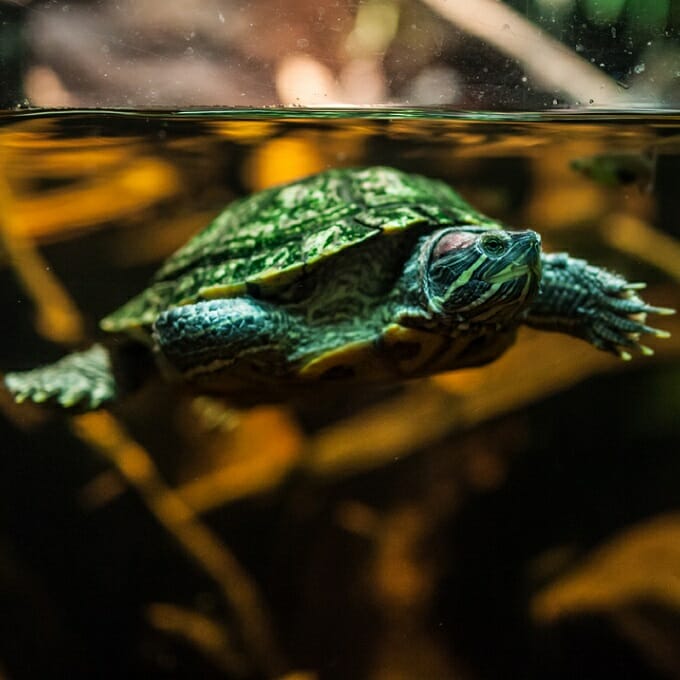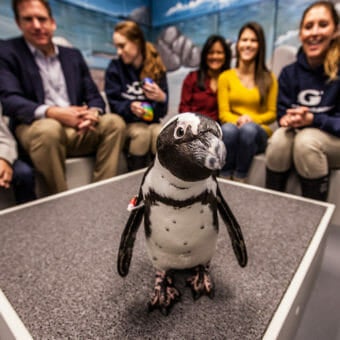-
Size
5-8 inches (13-20 cm) -
Diet
Omnivorous -
Range
North America -
Habitat
Quiet waters with muddy bottoms
Physical Characteristics
- The red-eared slider has a prominent red patch on the side of its head. In rare instances, this patch will be yellow.
- Occasionally, due to melanism the coloration of a red-eared slider’s shell, head, tail and limbs become increasingly dark. These dark individuals can completely lack many identifying characteristics. This condition is more common among males.
- The lower jaw of a slider is rounded, whereas it is flat for members of other genera.
- The carapace is commonly 5-8 inches (13-20 cm) long with a maximum size of 11.4 inches (29 cm).
Animal Fun Fact
Occasionally, due to melanism, the coloration of a red-eared slider’s shell, head, tail and limbs become increasingly dark. This condition is more common among males.
Diet / Feeding
- Omnivorous – diet consists of a wide variety of plant and animal matter.
Range / Habitat
- Occurs in North America from West Virginia through New Mexico, to the Gulf and northeast of Mexico.
- Found in quiet waters with muddy bottoms. This slider will bask on logs or other surfaces protruding from the water.
- Due to unauthorized releases, the red-eared slider appears in areas outside of its native range, including Western and Central Europe, South Africa, Southeast Asia, and Oceania.
Reproduction & Growth
- Hatchling carapaces average about 1 inch (2.5 cm) and will typically be colorful and patterned, fading as the turtle ages into adulthood.
- At the juvenile stage, coloration is green with a plastron marked by eye-like spots.
- Hybridization between similar species is not uncommon.
Conservation Status
- “Least Concern” on the IUCN Red List.
- Due to its abundance in non-native Europe threatening local species, the European Union has banned the importation of s. elegans.
- T. scripta as a whole is listed as one of IUCN’s “100 Worst Invasives.”
Additional Information
- Fellow subspecies include yellowbelly, Cumberland and big bend sliders.
Sources
- Conant, Roger and Joseph T. Collins. A Field Guide to Reptiles & Amphibians: Eastern/Central North America. Pgs. 174-178.
-







